It took one day.
On Friday morning we maneuvered out of Santa Fe and north toward Abiquiu, the site of Georgia O’Keefe’s Ghost Ranch. We found our way through winding and narrow streets and into a flow of commuter traffic; I remained focused on driving.
Moving faster now, other cars left us. The windshield emptied of distractions. We came over a rise, and immediately, in one moment, the desert light undid all its valves all the way open onto a long vista of hills and mesas, a landscape so clean and empty that I said “Ahh” aloud and then “my God, look at that!” I have spent time in the mountain west, often in deep wilderness, and maybe I thought that I had used up my share of wonder for the forms that land and sunlight might conspire to make, but what struck me at that moment like a blow to the chest was a replenished sense that something new was possible here. The terrain, transformed, became a bright and buoyant provocation. Inside me, I felt everything shift.
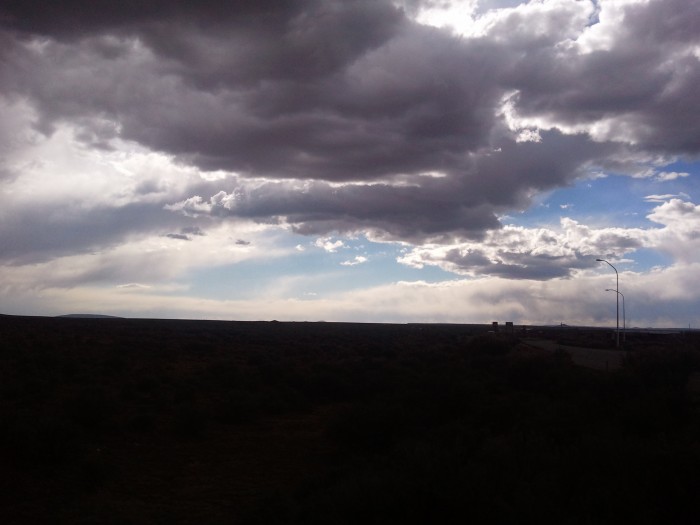 Extraordinary space encourages a sense of sovereignty, an allotment of freedom for the eyes which cannot stop swinging from point to point. On the road to the Ghost Ranch and to Bandelier, and in the final long glide up to Taos on Route 68, the hills drop away and miles and miles of distance fill with light, clouds, sky, a great raw galactic vastness. I can feel myself smiling. I can feel the long winter slide away. I can feel an extra life appearing. But those words are not enough. I cannot find the words to show you what this looks like, to capture the spectacle of this sky. Perhaps these will do better: “The sky was as full of motion and change as the desert beneath it was monotonous and still, — and there was so much sky, more than at sea, more than anywhere else in the world. The plain was there, under one’s feet, but what one saw when one looked about was that brilliant blue world of stinging air and moving cloud. Even the mountains were mere ant-hills under it. Elsewhere the sky is the roof of the world; but here the earth was the floor of the sky. The landscape one longed for when one was far away, the thing all about one, the world one actually lived in, was the sky, the sky (231-232)!”*
Extraordinary space encourages a sense of sovereignty, an allotment of freedom for the eyes which cannot stop swinging from point to point. On the road to the Ghost Ranch and to Bandelier, and in the final long glide up to Taos on Route 68, the hills drop away and miles and miles of distance fill with light, clouds, sky, a great raw galactic vastness. I can feel myself smiling. I can feel the long winter slide away. I can feel an extra life appearing. But those words are not enough. I cannot find the words to show you what this looks like, to capture the spectacle of this sky. Perhaps these will do better: “The sky was as full of motion and change as the desert beneath it was monotonous and still, — and there was so much sky, more than at sea, more than anywhere else in the world. The plain was there, under one’s feet, but what one saw when one looked about was that brilliant blue world of stinging air and moving cloud. Even the mountains were mere ant-hills under it. Elsewhere the sky is the roof of the world; but here the earth was the floor of the sky. The landscape one longed for when one was far away, the thing all about one, the world one actually lived in, was the sky, the sky (231-232)!”*
In 1541 Coronado crossed the Rio Grande close to the gorge. Perhaps he would have seen rising water vapor along its path, but from horse-back level, he could have not have been aware of its immensity until he was upon it. Coming from the south, he would have been surrounded by an enormous plain. White-capped mountains spread out to the northwest. Then … this canyon that cracks open the earth unexpectedly. Even within his dauntless, practical, rapacious, brutal perspective, he must have felt a sense of awe at the wildness and expanse of the land.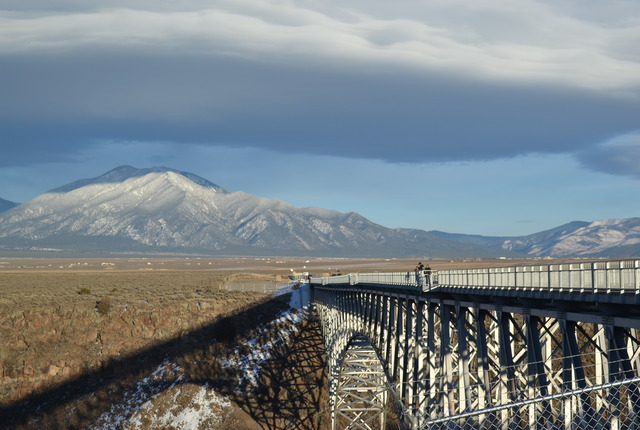
The visitor’s imagination begins to fill in the space.
Maybe, just my imagination.
I feel taken over by this country … not myself.
At the Bandelier National Monument, Anasazi cliff dwellings, kivas and the remnants of many roomed Pueblos were inhabited continually for close to 400 hundred years deep within a narrow canyon. A stream cuts through the canyon’s center and the big cottonwoods and ponderosa pines that follow it create an oasis full of birds. A paradox of the high desert’s expansiveness is found here – resting far below the canyon rim, inside an enormous bowl of rock where we had climbed on ladders and along tiny stepped paths, even with the tops of trees, I felt protected from the wind and sun and from the savagery of winter. Here was a snug, human-sized paradise below the stirring and dangerous immensity of the plains. The world might have been coming apart above you, fire or snow or sand shrieking like devils, but in this cleft of the world, you would have been safe, and when the storms had passed, you could again climb the trail up into the other corresponding dimension of your life, the one of distance and light and of mountains many days journey beyond your home. 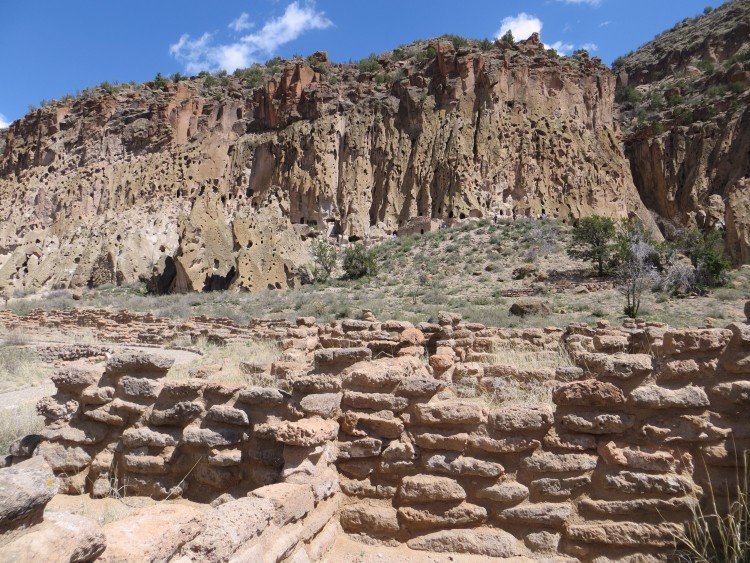
By contrast, Pennsylvania is a fat, green country, richly watered. Set the Schuylkill River in New Mexico and it would be a state treasure, protected by law and with guns and knives if necessary. In Pennsylvania, trees and hedges, all manner of undergrowth, grow promiscuously, and thus there is always a screen for the eye. Pennsylvania obscures the eye. We see vegetation more than the sculptured arrangements of the earth. Pennsylvania hides things and can send up such a volume of creepers and vines and borders of scrub in half a growing season that it feels as if travelers are always enclosed and making their way through an unchanging, ever-the-same scene. And from November through March comes the gray rain and low, iron-gray skies, day after day.
New Mexico has been stripped down to folds and knolls and waves of rock, arroyos and ravines and mountains that hang back just a bit, but promise the eye snow and deep washes of trees, and then more vermillion mesas, and then big trees threading along the waterways where mid-April warmth and sun have sent up sudden splashes of a bright almost chartreuse green. Here, the roads often straighten and like missiles suddenly rise above the ground, and that is when I felt as if I were seeing something both brand new and of great antiquity. This place feels unfilled, essential, elemental, beautiful in its severity … seductive, a place itself already radiant, a place where one might again make something bright.
* From Death Comes for the Archbishop by Willa Cather
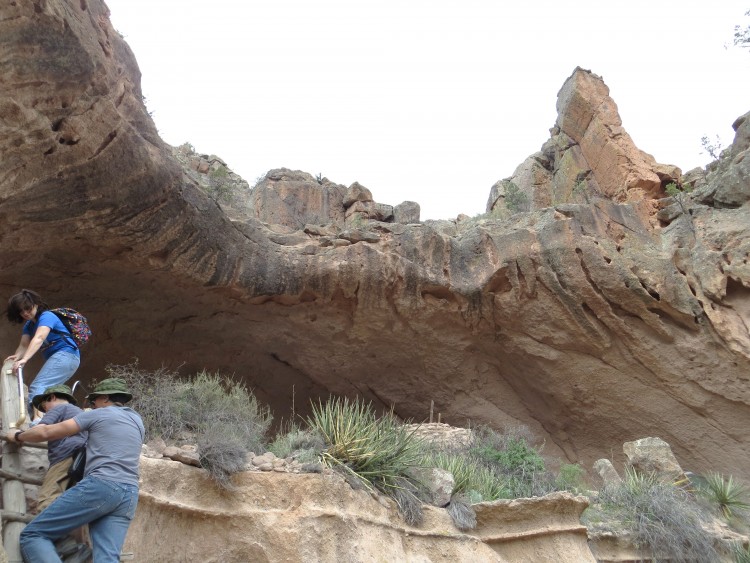
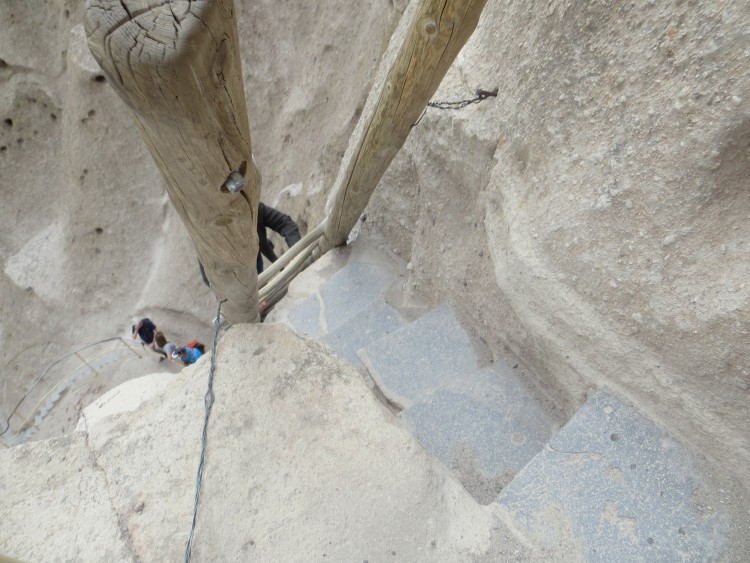
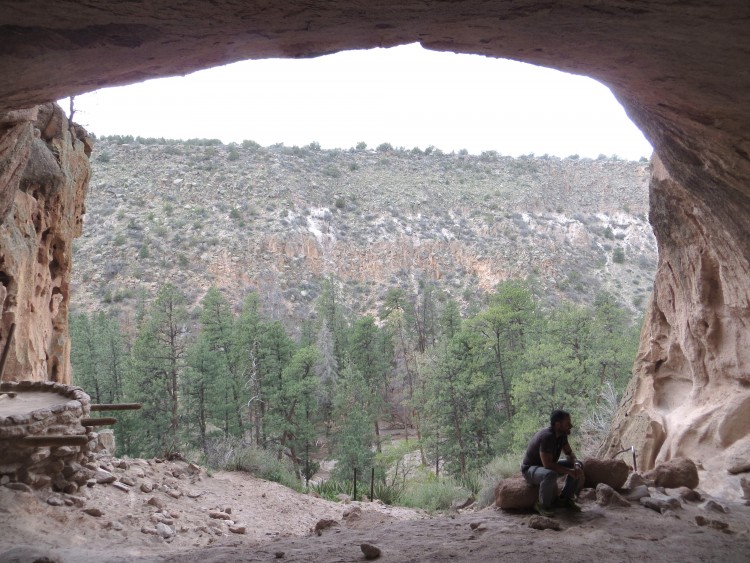
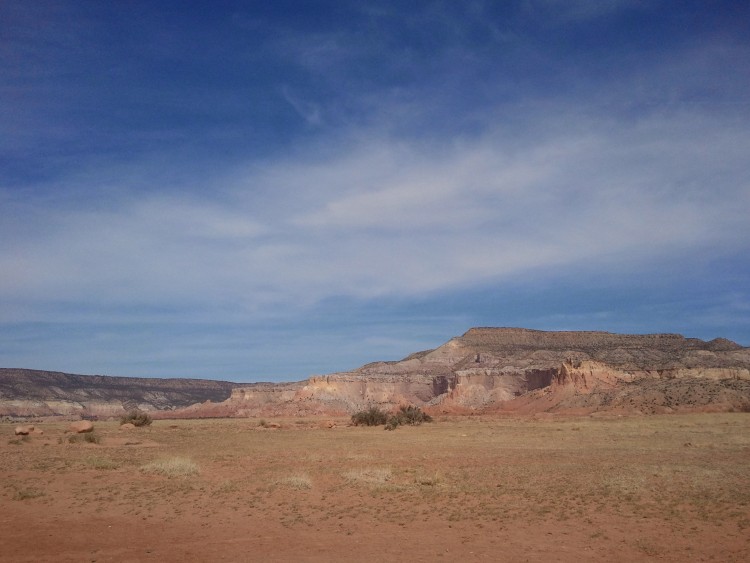
Beautiful pics, Mike. You two must have had a wonderful time!